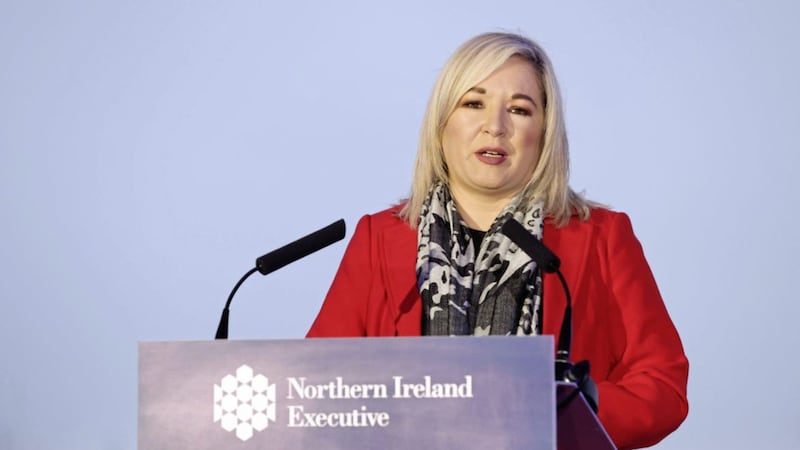When the DUP’s electoral support declined, the party’s elected representatives ousted the leadership. When Sinn Féin’s electoral support fell, the leadership ousted some of the party’s elected representatives.
This difference in approach reflects an interesting contrast between the (recently acquired) Presbyterian-style democracy in the DUP and the Catholic hierarchical approach of top-down discipline in SF. One party acted from the bottom up. The other ruled from the top down.
How parties operate is their own business, but as the only vote-losing party not to replace its leader recently, how has SF’s northern leader performed? Since Michelle O’Neill’s appointment (or perhaps anointment), the party has lost support in three elections: three percentage points down in the European election, one point down in local elections and seven points down in Westminster.
The Westminster losses included an average decrease of 5,000 votes in Mid-Ulster, South Down, West Belfast and Newry and Armagh. Only John Finucane’s victory in North Belfast (where the SDLP abstained) reversed the trend.
Although O’Neill must shoulder some responsibility, the losses mainly stem from the party’s failure to tackle everyday issues: 23 per cent of the population here is on a hospital waiting list (nine per cent in England) and one in four children go hungry.
The promise of everlasting happiness in a future united Ireland is no comfort for present misery.
In Derry and Strabane, support fell eight points, followed by a 17,000-vote defeat in Foyle. Martina Anderson was sacked for those results. No one was dismissed for the other losses.
The problem may be that Anderson still speaks fluent 1970s republicanism, rather than SF’s current double-speak. This was typified by Michelle O’Neill’s refusal to meet Prince Charles this week, apparently because of the Ballymurphy inquest findings.
But Charles was Parachute Regiment commander when she previously met him and the Ballymurphy victims were innocent then too. She still found time to praise the Royal family.
Anderson is old school. When the late John Kelly, co-founder of the PIRA and later MLA, showed me around Stormont about 1999, he proudly related the job titles and prison records of SF’s staff. Prison pedigree appeared to be a basic qualification for all jobs. Now it may be an embarrassment.
Because Dungannon’s Thomas Clarke served 15 years in prison, his was the first signature on the 1916 Proclamation. Martina Anderson served 13 years. Her recognition was to be told that she was a great republican by Mary Lou McDonald, who was at private school while Anderson was behind bars. It will hardly endear McDonald, or O’Neill, to all the northern party faithful.
Open elections within SF are unlikely. When John O’Dowd challenged O’Neill for the northern leadership in 2019, Mary Lou said that he would not be punished for his decision. (What punishment would democracy deserve?)
The party’s record in anointing election candidates is mixed. In the south, Gerry Adams selected the capable. In the north, Martin McGuinness opted for the compliant. Others were sidelined, including Conor Murphy, now SF’s best performing minister, and the popular Michelle Gildernew.
As a result, most Sinn Féin MLAs are like impact subs on a hurling team. They come on, score a few points and are then returned to the bench, never to be seen again. It is hard to know how much influence, if any, Michelle O’Neill has in all that. Is she leading or being led?
Perhaps what best symbolises her leadership are the executive’s press conferences in Dungannon, where Hugh O’Neill’s castle stood. In 1603, Hugh surrendered to Elizabeth I (who, unknown to him, had died six days earlier) ending Irish customs and laws.
Sinn Féin does not appear to recognise the irony of another Tyrone O’Neill paying homage to Elizabeth II from that same site. They might find her a better place to stand, physically and politically, give her a decent team to lead and provide her with objectives rather than aspirations.
Until that happens, it will not matter who Sinn Féin’s northern leader is.









